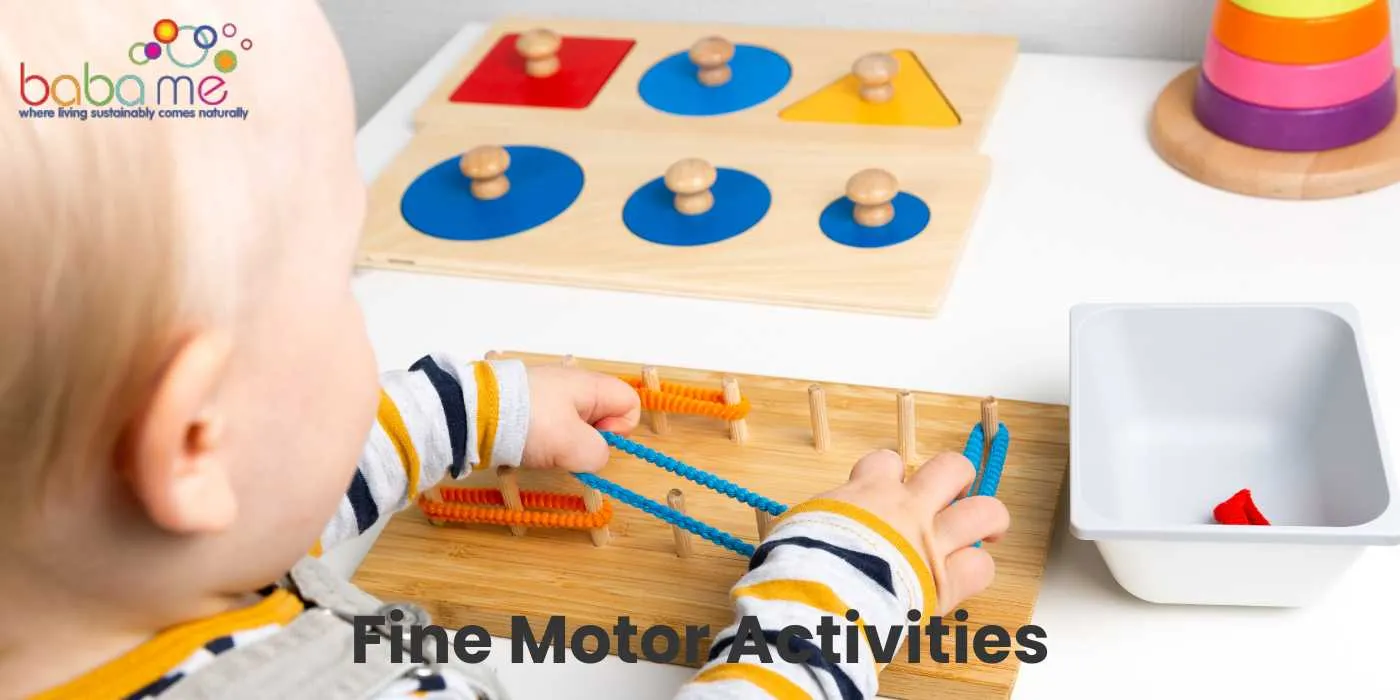From the earliest scribbles of a toddler to the intricate handiwork of a craftsperson, fine motor skills play a pivotal role in our daily lives.
These skills, which involve the refined control of small muscles in our hands and fingers, are fundamental for tasks as simple as buttoning a shirt or as complex as playing a musical instrument.
Delving into the world of fine motor activities can not only help in refining these skills but also offer a unique blend of fun and learning.
Key Takeaways
Understanding fine motor skills is crucial to identify areas that need improvement.
Fine motor skills develop gradually as children grow, and each age group has different milestones.
Engaging in fun and creative activities can help children develop hand-eye coordination, finger strength, and precision.
Understanding Fine Motor Skills
Fine motor skills are the ability to make movements using the small muscles in your hands, wrists, and fingers. These skills are essential for completing everyday tasks such as writing, drawing, buttoning clothes, and using utensils.
Fine motor skills require manual dexterity, coordination, and motor control, and they start to develop in babies and young children, improving over time with maturity.
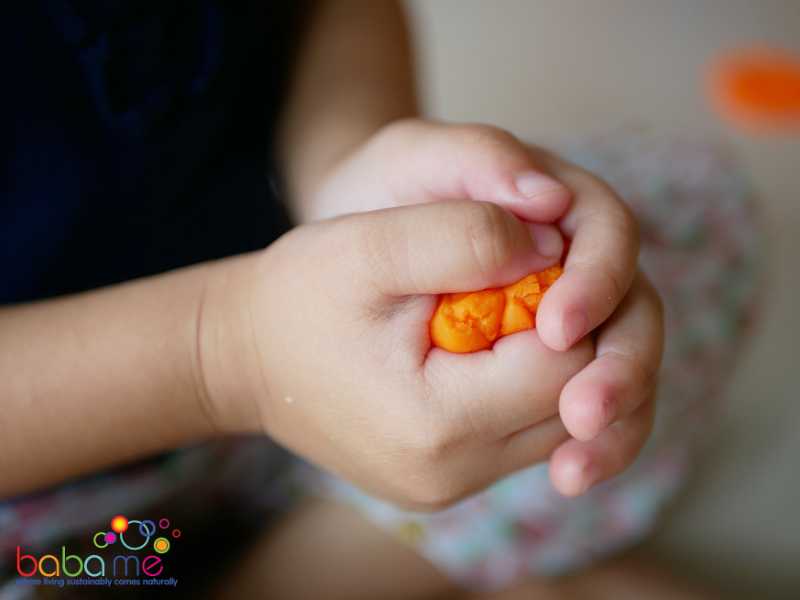
Importance of Fine Motor Skills
Fine motor skills are crucial for a child’s development, and they play a significant role in their academic and social success. Developing these skills helps children to become more independent and self-sufficient, and it also boosts their confidence and self-esteem.
Fine motor skills also help children to learn and perform essential school-related tasks such as writing, cutting, and drawing.
Fine Motor Skills vs Gross Motor Skills
Fine motor skills are different from gross motor skills, which involve the movement of larger muscle groups, like the arms, legs, and torso.
Gross motor skills are essential for activities such as running, jumping, and climbing. In contrast, fine motor skills are necessary for activities that require precise movements and coordination, such as threading beads, tying shoelaces, and using scissors.
Fine motor skills are also different from mobility and endurance. While mobility refers to the ability to move around, endurance refers to the ability to sustain physical activity over time.
Fine motor skills, on the other hand, are all about the small muscles and the coordination required to use them.
Development of Fine Motor Skills in Different Age Groups
Fine motor skills are the coordination of small muscles in the hand, wrist, and fingers. These skills are important for everyday activities such as writing, buttoning clothes, and using utensils. The development of fine motor skills varies by age group. Here’s what you can expect for babies, toddlers, and preschoolers.
| Age Group | Fine Motor Activities |
|---|---|
| 6-12 months | – Grasping toys and rattles – Exploring textures with fingers – Transferring objects hand-to-hand |
| 1-2 years | – Stacking blocks – Scribbling with crayons – Turning board book pages – Simple shape puzzles |
| 2-3 years | – Playdough manipulation – Threading large beads – Finger painting – Using safety scissors (with supervision) |
| 3-4 years | – Lacing cards – Tracing basic shapes – Completing jigsaw puzzles with larger pieces – Building with small construction toys (e.g., Duplo) |
| 4-5 years | – Cutting along lines with safety scissors – Buttoning and unbuttoning – Folding paper – Bead threading with smaller beads |
| 5-6 years | – Writing letters and numbers – Tying shoelaces – Using tweezers for sorting activities – Basic sewing with plastic needle |
| 6-7 years | – Detailed drawing and coloring – Complex construction toys (e.g., LEGO) – Making intricate crafts – Simple weaving projects |
| 7-8 years | – Writing paragraphs – Crafting detailed bead jewelry – Advanced sewing and knitting projects (with supervision) – Detailed model building |
Babies
Babies are born with limited fine motor skills. However, they begin to develop these skills as they grow. Here are some milestones you can expect:
0-3 months: Babies can grasp objects that are placed in their hands. They will also begin to swipe at objects.
4-6 months: Babies can hold objects with both hands and transfer them from one hand to the other. They will also begin to reach for objects.
7-9 months: Babies can pick up small objects with their fingers and thumb. They will also begin to bang objects together.
10-12 months: Babies can place objects into containers and take them out. They will also begin to use a pincer grasp to pick up small objects.
Toddlers
Toddlers are full of energy and curiosity. They are eager to explore and learn new things. Here’s what you can expect for their fine motor skills:
1-2 years: Toddlers can stack blocks and turn pages in a book. They will also begin to scribble with crayons.
2-3 years: Toddlers can use a spoon and fork to feed themselves. They will also begin to use safety scissors to cut paper.
3-4 years: Toddlers can draw basic shapes such as circles and squares. They will also begin to dress themselves with some assistance.
Preschoolers
Preschoolers are preparing for kindergarten and are eager to learn new skills. They are also becoming more independent. Here’s what you can expect for their fine motor skills:
4-5 years: Preschoolers can draw more complex shapes such as triangles and rectangles. They will also begin to use a pencil to write their name.
5-6 years: Preschoolers can tie their shoes and use a zipper. They will also begin to use a ruler to draw straight lines.
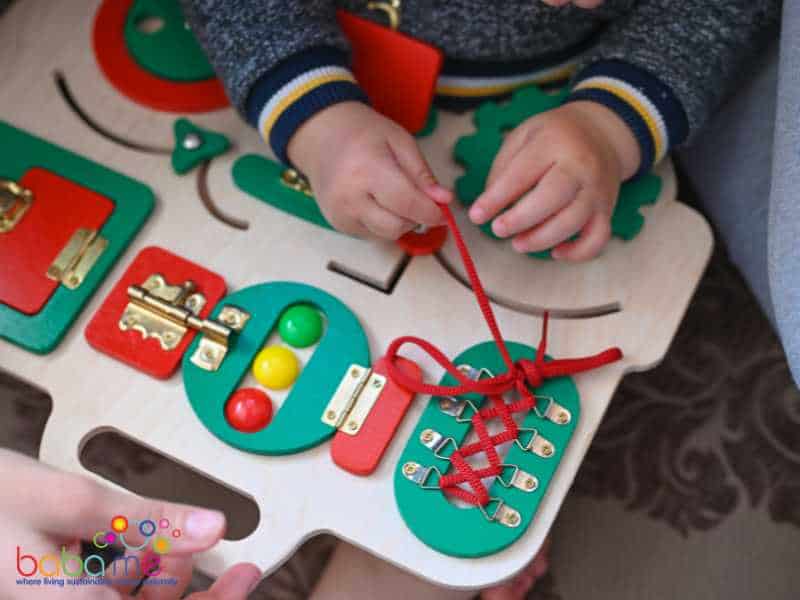
Fine Motor Skills Activities for Kids
Fine motor skills are essential for many everyday activities, such as writing, buttoning clothes, and using utensils. Engaging in activities that develop fine motor skills is crucial for children’s development.
Here are some fun and engaging activities that can help enhance your child’s fine motor skills. So let’s dive in and have some fine motor fun:
Finger Painting:
Finger painting serves as a vibrant and tactile medium for children. While it may seem like just a fun activity, it offers much more. Beyond stimulating creativity, finger painting helps develop the hand’s small muscles crucial for tasks like writing.
As children smear, mix, and create with paint, they explore different textures and enhance their sensory experiences. It’s an activity that can be done indoors on a rainy day or outdoors in the sun, using a variety of paints and surfaces to increase the challenge and fun.
Bead Threading:
Bead threading combines art with motor skill development. Offering kids an array of colorful beads and strings, this activity allows them to craft necklaces, bracelets, or simple patterns.
The meticulous task of picking up each bead and threading it is an exercise in patience and precision, refining their hand-eye coordination. Over time, kids can be introduced to complex patterns, pushing their creativity and motor skill enhancement simultaneously.
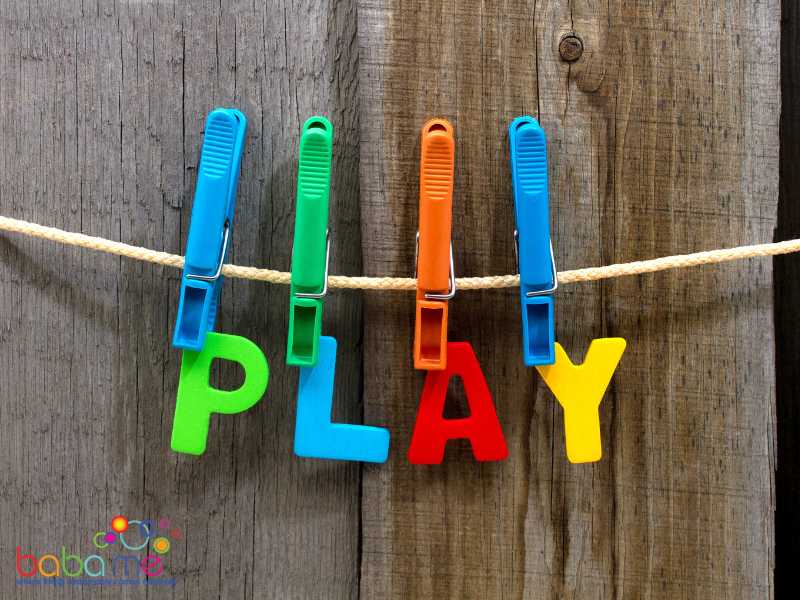
Clothespin Play:
Who would’ve thought laundry accessories could be educational? Clothespins, with their simple yet functional design, are great tools for kids. Clipping and unclipping them onto different surfaces, like sturdy cardboard or bowls, helps children refine their pincer grasp.
The repetitive motion strengthens the fingers and enhances coordination, preparing their hands for intricate tasks like writing or buttoning clothes.
Cutting with Safety Scissors:
A child’s first introduction to tool use often comes with safety scissors. This seemingly simple task teaches them the importance of cautious handling while improving hand-eye coordination. They can start with basic shapes, then graduate to intricate designs, enhancing their concentration and precision.
Over time, this activity not only develops their scissor skills but also their understanding of shapes and patterns.
Sticker Art:
Stickers are universally loved by kids. Beyond their decorative appeal, stickers can be a fantastic tool for motor skill development. Peeling and placing them requires precision and control.
Crafting scenes, making patterns, or just randomly placing them on a canvas can greatly enhance a child’s finger dexterity and spatial understanding, making a playful activity educationally rich.
Playdough Manipulation:
Play dough offers a world of possibilities. This soft, moldable substance can be rolled, pinched, stretched, and shaped. Each motion, whether it’s crafting an intricate figure or just mindlessly squishing, is beneficial. The varied actions work different hand muscles, aiding in their development.
As children get more skilled, introducing tools like plastic knives or molds can increase the complexity and fun.
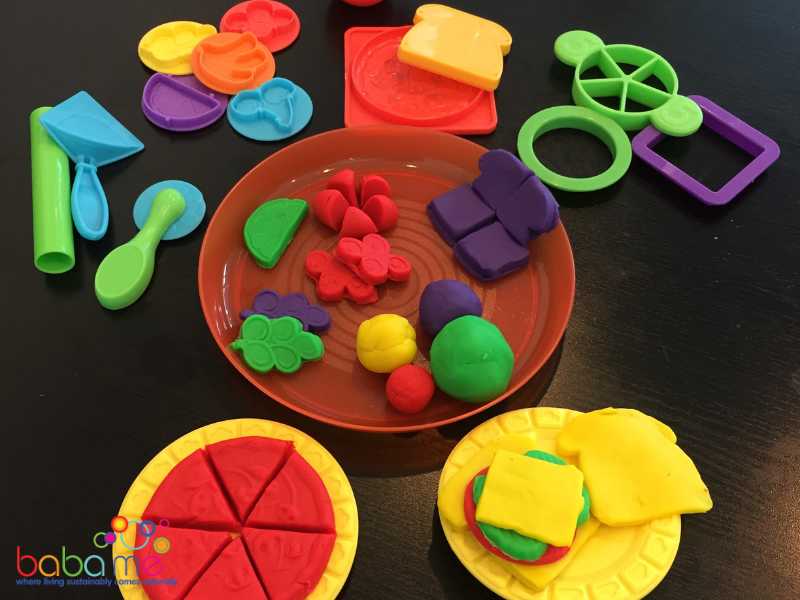
Lacing Cards:
Lacing cards combine threading and pattern recognition, a really good fine motor activity. These cards, often adorned with beautiful images or patterns, come with holes around their perimeters. Children can weave shoelaces, yarn, or ribbons through these holes, following certain patterns or free-forming their designs.
Beyond its artistic appeal, lacing cards hone a child’s focus, patience, and hand-eye coordination, making them an excellent learning tool and one of my favorite fine motor activities.
Tweezer Transfers:
A bowl of pompoms, a pair of tweezers, and a child’s concentration can turn into a motor skill masterclass – really helping with fine motor development. Tweezer transfers, where kids move small items between containers using tweezers, is a great exercise for the pincer grasp.
Beyond the physical skills, this activity cultivates patience and precision. Changing the items, from beads to small pebbles, can introduce varied challenges.
Button Sorting:
Buttons, with their myriad shapes, sizes, and colors, are more than just fasteners. Sorting buttons can be a multifaceted learning experience for kids as well as improving fine motor control. As they pick, categorize, and arrange buttons, they’re refining their observation skills and dexterous hand manipulation. Over time, this can evolve into creating patterns or art pieces, melding creativity with motor skill development.
Puzzle Assembly:
The humble jigsaw puzzle is a trove of learning. As kids analyze each piece, trying to find its rightful place, they’re honing their spatial intelligence and observational skills. The act of fitting pieces together, rotating and aligning them, demands precise fine motor movements of the hand.
Completing a puzzle offers not just a sense of achievement but also a significant boost to their motor skills and cognitive abilities.
Tracing Shapes:
Tracing might seem like a preliminary activity, but it’s a foundational writing tool. Guiding a pencil or crayon along dotted lines, intricate paths, or around templates helps children gain mastery over their hand movements, as well as giving them increased hand and finger strength.
Over time, tracing can introduce kids to alphabets, numbers, and more complex shapes, setting a strong foundation for their writing journey and their pencil grip or digital grip.
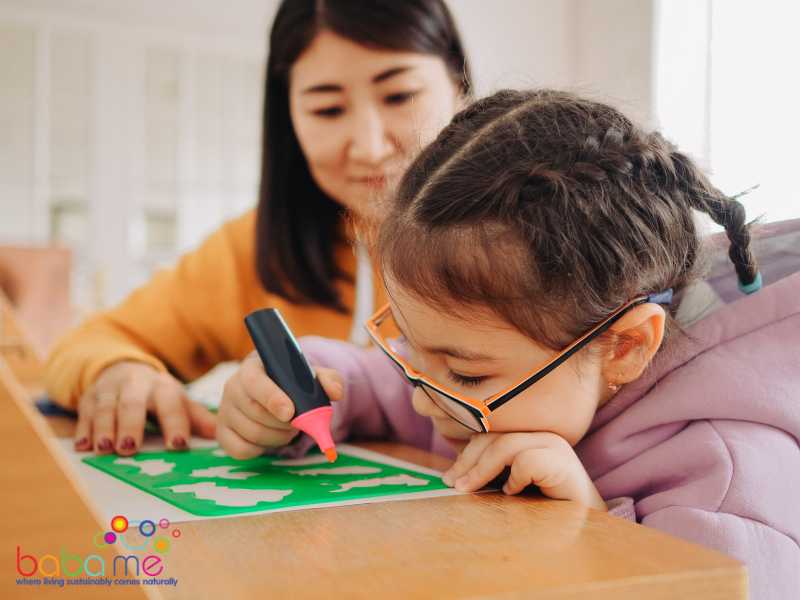
Rubber Band Stretching:
Rubber bands are simple yet effective tools for motor skill development. Stretching them across objects or pegboards makes children understand elasticity and resistance. They also learn about shapes and spatial arrangements in a tactile manner.
As they maneuver these bands, they are refining their hand strength and coordination, preparing them for more intricate tasks.
Coin Drop:
Dropping coins might sound simple, but it’s a meticulous task. As kids slot coins into containers or piggy banks, they practice the pincer grasp and hone their concentration. The repetitive nature of the task combined with the rewarding sound of a coin clinking offers both motor skill development and a sense of achievement.
Pipe Cleaner Creation:
Pipe cleaners, with their flexibility and vibrant colors, can be a child’s artistic medium. They can be bent into shapes, threaded with beads, or intertwined to create structures. The varied possibilities push kids to use their imagination while working their fingers, enhancing both creativity and dexterity.
Hole Punching:
Hole punchers can transform a plain sheet of paper into an art piece. As kids punch holes, creating patterns, designs, or random assortments, they’re working on their hand strength and coordination. This activity also cultivates spatial understanding as they visualize designs and bring them to life.
Zipper Practice:
Zippers are omnipresent in daily life. Teaching kids to zip and unzip is a practical and beneficial activity. As they maneuver the zipper pull, aligning the teeth and securing them, they’re refining their hand movements and enhancing their dexterity. Mastery over zippers also instills a sense of independence in children.
Lock and Key:
Locks and keys might seem old-fashioned, but they are intricate devices. Introducing kids to various locks, matching them to their respective keys, is an exercise in observation and precision. Inserting a key and turning it requires wrist rotation and coordination, skills that are foundational for many daily tasks as well as developing their middle finger and index finger coordination skills.
Sand Drawing:
Drawing on sand offers a unique tactile experience. The malleability of sand allows kids to easily create patterns, write, or simply play. Each swipe, drag, or pattern is an exercise in hand control and sensory feedback. Sand drawing can be done in trays at home or during beach visits, making it versatile and engaging.

Water Transfer:
Transferring water between containers using droppers or sponges combines sensory play with skill development. The act of squeezing a dropper or sponge, controlling the flow, and ensuring minimal spills cultivates hand strength and precision. This simple activity also introduces concepts of volume and capacity in a fun, hands-on manner.
Lego Building:
Legos, with their intricate design, offer endless creative possibilities. Building structures, following instructions, or free-forming designs pushes kids to strategize, visualize, and execute. The act of snapping pieces together, aligning them correctly, and building stable structures refines their hand-eye coordination and spatial intelligence.
Stacking Blocks:
Stacking is a foundational skill that introduces kids to balance, weight, and spatial arrangement. As they pile blocks, trying to reach greater heights or create patterns, they’re honing their hand steadiness and coordination. This activity also introduces foundational physics concepts in a playful manner.
Drawing in Shaving Cream:
Shaving cream is a delightful medium for kids. Spreading it on a surface and drawing on it offers a unique texture and sensory feedback. Writing alphabets, creating patterns, or just playing introduces them to a new medium while refining their hand control and tactile sensitivity.
Pasta Stringing:
Uncooked pasta, with its varied shapes, can be a fun threading material. As kids string spaghetti, penne, or fusilli onto yarn or strings, they’re exploring textures and patterns. This activity enhances their fine motor skills, hand-eye coordination, and introduces them to basic culinary elements in a playful manner.
Torn Paper Art:
Tearing paper and creating art might seem rudimentary, but it’s a motor skill exercise. As kids rip paper of varied textures and then arrange them to craft scenes or abstract pieces, they’re enhancing their finger strength and creative expression. This activity can be done with magazines, colored paper, or even newspaper, making it versatile and accessible.
Salt Dough Sculpting:
Salt dough is like a blank canvas. Kids can mold, shape, and design almost anything they envision. Working with this malleable substance enhances their tactile sensitivity, hand strength, and creativity. Once their creation is baked and hardened, it stands as a testament to their imagination and skill.
Nuts and Bolts:
Combining nuts and bolts is both a physical and cognitive challenge. As kids match, screw, and unscrew them, they’re honing their hand-eye coordination, understanding of threads, and patience. It’s an exercise that also introduces basic mechanical concepts in a hands-on manner.
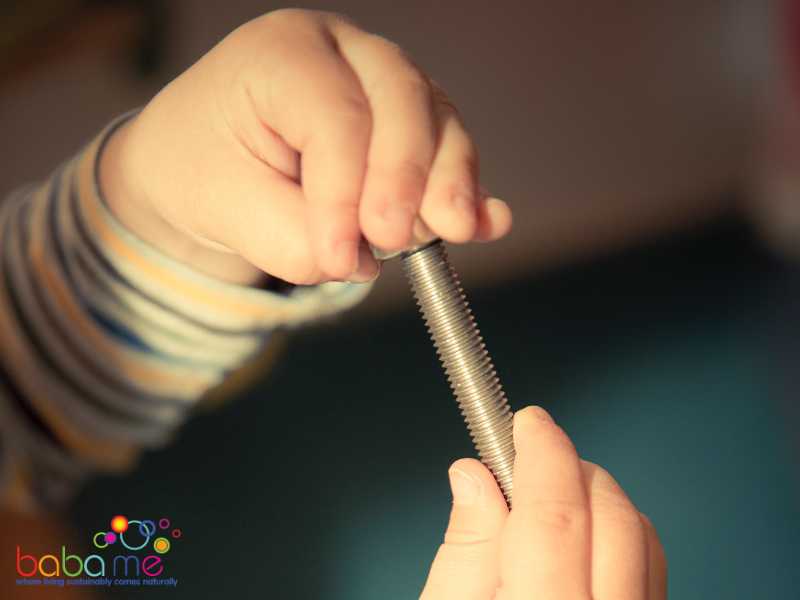
Folding Paper:
Folding paper, be it origami or crafting planes, is both an art and a motor skill exercise. Each fold demands precision and understanding of angles. As kids progress, creating more intricate designs, they’re not only honing their hand skills but also their spatial understanding and creativity.
Plastic Needle Sewing:
Sewing, even with child-safe plastic needles, is a meticulous task. As kids pass the needle through fabric, creating patterns or joining pieces, they’re refining their hand-eye coordination and patience. This activity can lead to crafting simple items like pouches or art pieces, blending utility with creativity.
Seed Sprinkling:
Creating art with seeds is a unique experience. As kids sprinkle seeds onto glue-coated surfaces, following patterns or free-forming designs, they’re practicing precision and hand control. Beyond the motor skills, this activity introduces them to varied seed types, textures, and natural art materials.
Magnet Fishing:
Magnet fishing offers an intriguing blend of science and motor skill development. As kids use magnet-tipped rods to pick up metallic objects, they’re enhancing their hand-eye coordination, understanding magnetism, and having a lot of fun. The thrill of finding and attracting objects adds an element of surprise to this activity.
Sorting with Tweezers:
Tweezers are precise tools. When combined with sorting, they turn into an educational instrument. As kids pick up small items, categorizing and arranging them, they’re honing their observational skills, pincer grasp, and patience. Varied objects, from beads to grains, can be used to increase the challenge and learning.
Feather Blowing:
Blowing feathers using straws is a delightful activity. As kids aim and control their breath to direct the feather’s movement, they’re not only working on their breath control but also understanding airflow and dynamics. It’s a light-hearted activity that can turn into a competitive game or a relaxing pastime.
Paper Punch Art:
Punching holes in paper to create designs is a blend of art and skill development. As kids use punches of varied shapes, they’re working on hand strength and coordination. The end result, often a beautiful design or pattern, offers a sense of achievement and artistic expression.
Pinch Pot Clay Art:
Clay offers a 3D canvas for kids. Creating pinch pots, where they mold and shape using just their fingers, enhances tactile sensitivity, hand strength, and creativity. As they craft bowls, containers, or abstract pieces, they’re expressing themselves and refining their motor skills.
Craft Bead Patterns:
Craft beads, often tiny and colorful, are a challenge and a delight. Placing them on pegboards to create patterns pushes kids to focus, be patient, and precise. The end result, often a beautiful design, is a testament to their skills and creativity.
I hope the above fine motor ideas have give you plenty of inspiration to help your little ones improve their fine motor strength. What might seen like silly games can actually be a great fine motor activity.
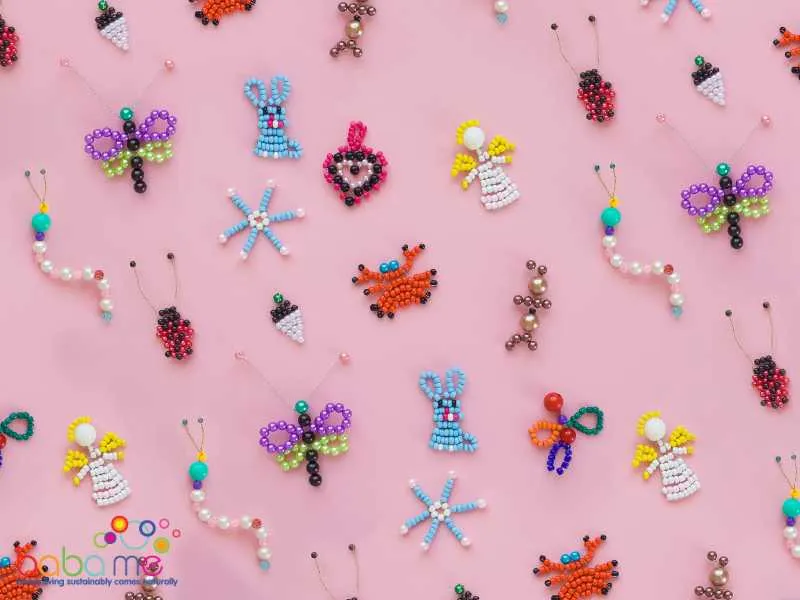
FAQs on Fine Motor Skill Activities
What are some fine motor skill activities?
Fine Motor Skill Activities:
Finger Painting: Allows children to use their fingers to create art.
Bead Threading: Helps in enhancing hand-eye coordination.
Playdough Manipulation: Molding and shaping playdough hones hand muscles.
Lacing Cards: Threading shoelaces or yarn through cards enhances hand-eye coordination.
Puzzle Assembly: Enhances hand-eye coordination and problem-solving.
Scissor Skills: Using safety scissors to cut patterns out of paper.
Clothespin Play: Clipping and unclipping clothespins strengthen the pincer grasp.
Buttoning Activities: Practicing buttoning on large button boards.
What are fine motor activities for autism?
Fine Motor Activities for Autism: Autistic children, like all children, have varied abilities. Some may find fine motor activities challenging, while others may excel. Tailored activities can help them improve their skills.
Weighted Crayons: Heavier crayons can help with grip and control.
Sorting Tasks: Sorting by color, shape, or size can be both therapeutic and skill-enhancing.
Simple Crafts: Using glue to paste colored paper or cotton balls onto templates.
Sensory Bins: Filled with rice, beans, or sand, allowing the child to sift through, pick items, or bury objects.
Building Blocks: Encourages hand-eye coordination and creative play.
Tactile Books: Books with varied textures to touch and explore.
What are fine motor Montessori skills?
Fine Motor Montessori Skills: The Montessori method focuses on hands-on, self-directed learning. Some activities developed to enhance fine motor skills include:
Practical Life Activities: Pouring, scooping, and transferring materials.
Pin Poking: Pushing a pin through points around a shape on paper, improving hand strength.
Tweezing or Spooning: Transferring small items like beans or beads from one container to another.
Dressing Frames: Boards that have zippers, buttons, buckles, and laces to practice dressing skills.
Tracing: Using insets and tracing the inner and outer edges.
Cutting: Practicing with scissors to cut along predetermined lines.
What are fine motor movements with objects?
Fine Motor Movements with Objects: Fine motor movements involve the use of smaller muscle groups, typically in the hands and fingers, to manipulate objects. Examples include:
Pincer Grasp: Using the thumb and forefinger to pick up small items.
Tripod Grasp: Holding a pencil or pen using the thumb, index finger, and middle finger.
Bilateral Hand Use: Using both hands together to perform a task, like holding paper with one hand while cutting with the other.
In-hand Manipulation: Adjusting an object within the hand without using the other hand, like rolling a coin over the fingers.
Rotary Motion: Turning or rotating an object using fingers, like turning a key or screwing a lid.
Palmar Supination: Flipping an object from the palm upwards to a palm downward position, similar to turning a pancake with a spatula.

